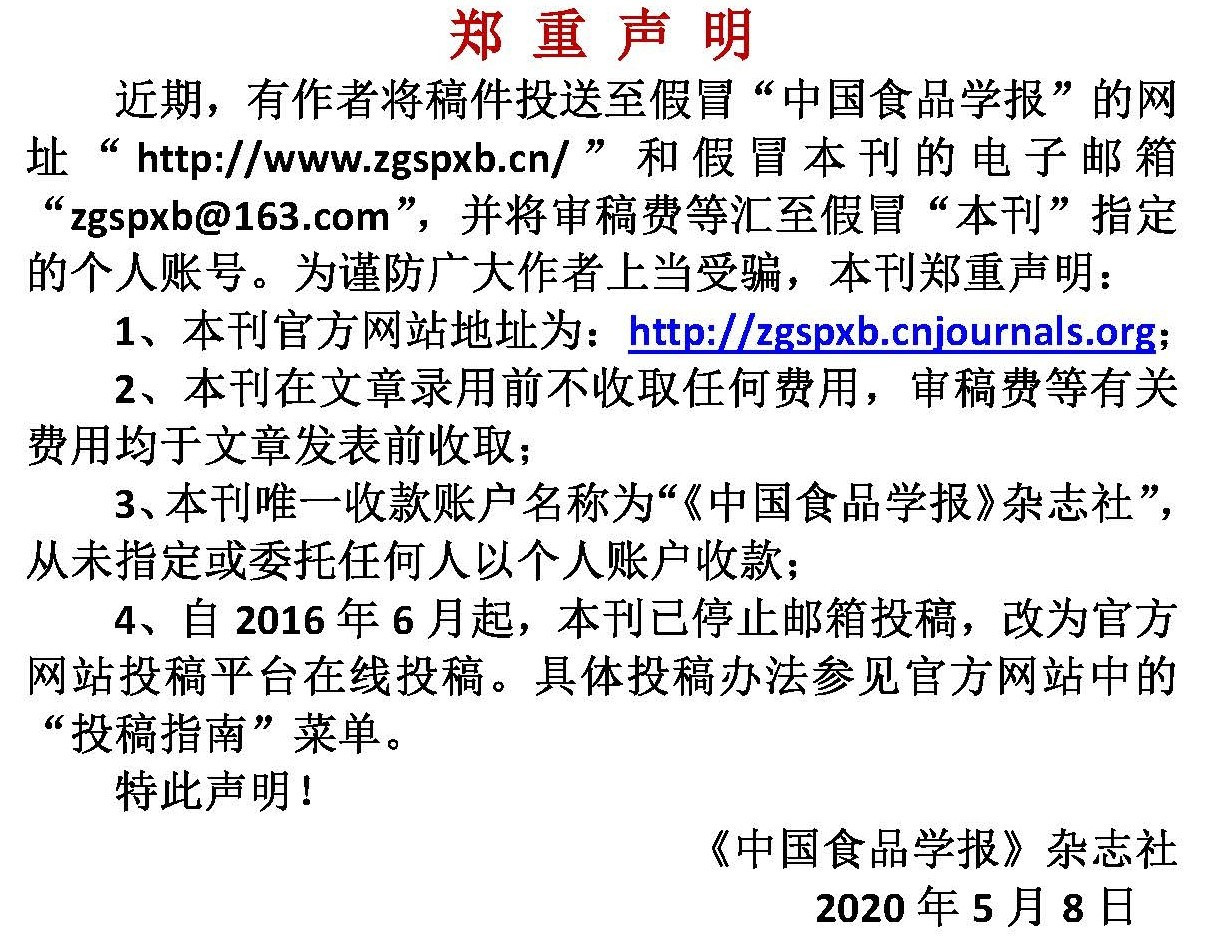基于分子感官科学技术鉴定热处理杨梅汁的关键香气组分变化
作者:
作者单位:
(1.浙江大学生物系统工程与食品科学学院 智能食品加工技术与装备国家地方联合工程研究中心浙江省农产品加工技术研究重点实验室 浙江省健康食品制造与品质控制国际合作基地浙江大学馥莉食品研究院 杭州 310058;2.浙江大学宁波研究院 浙江宁波 315100)
作者简介:
通讯作者:
中图分类号:
基金项目:
国家重点研发计划项目(2022YFD2100803)
Identification of Key Aroma Compounds in Thermally Treated Bayberry Juice by Sensomics
Author:
Affiliation:
(1.College of Biosystems Engineering and Food Science, National-Local Joint Engineering Research Center of Intelligent Food Technology and Equipment, Zhejiang Key Laboratory for Agro-Food Processing, Zhejiang International Scientific and Technological Cooperation Base of Health Food Manufacturing and Quality Control, Fuli Institute of Food Science, Zhejiang University, Hangzhou 310058;2.Ningbo Research Institute, Zhejiang University, Ningbo 315100, Zhejiang)
Fund Project:
引用本文
程焕,陈颖,陈健乐,陈士国,叶兴乾.基于分子感官科学技术鉴定热处理杨梅汁的关键香气组分变化[J].中国食品学报,2024,24(6):341-353
复制分享
文章指标
- 点击次数:
- 下载次数:
- HTML阅读次数:
历史
- 收稿日期:2023-06-07
- 最后修改日期:
- 录用日期:
- 在线发布日期: 2024-07-22
- 出版日期:
版权所有 :《中国食品学报》杂志社 京ICP备09084417号-4
地址 :北京市海淀区阜成路北三街8号9层 邮政编码 :100048
电话 :010-65223596 65265375 电子邮箱 :chinaspxb@vip.163.com
技术支持:北京勤云科技发展有限公司
地址 :北京市海淀区阜成路北三街8号9层 邮政编码 :100048
电话 :010-65223596 65265375 电子邮箱 :chinaspxb@vip.163.com
技术支持:北京勤云科技发展有限公司
